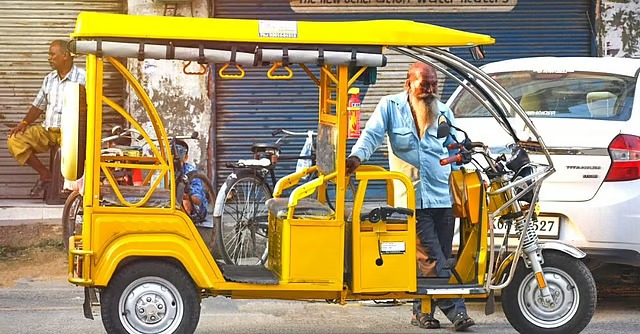Shiv Dayal, J.
This second appeal arises out of a suit for the sale of agricultural holding which was mortgaged by the respondent''s grandfather Sitaram (now dead) in favour of the plaintiff under a deed of September 29, 1943, for Rs. 2,100. This suit was instituted on April 29, 1954, in the Court of the Civil Judge, First Class, Gwalior. The defendant challenged the jurisdiction of the civil Court. In that connection it was also contended by the defendant that earlier a suit had been instituted by the mortgagee in the Court of the Tahaildar which was eventually dismissed for default and, for that reason also, this suit was barred. Both the Courts below have taken the view that the suit being entertainable in the revenue Court u/s 275 of the Quanoon Mal, Gwalior State, a civil suit was barred.
It is urged by Shri Jain that section 275 of the Quanoon Mal has no applicability to the suit because the Quanoon Mal governed only Zamindari tenures while the suit holding was a ryotwari land on the date of the suit, Zamindari having been abolished with effect from October 2, 1951. And since there is no provision in the Madhya Bharat Land Revenue and Tenancy Act conferring jurisdiction on a revenue Court to entertain suits relating to mortgages, by virtue of section 151 of that Act, a suit lies only in the civil Court. This argument at the first sight appears plausible, but on a little reflection I find that it is without force. The mortgage was effected in the year 1943 when the Quanoon Mal was in force. The rights and liabilities were then governed by that enactment on the abolition of Zamindari and the extension of the Madhya Bharat Land Revenue and Tenancy Act, the mortgage remained unaffected because of the saving provision contained in section 72(9) of the Madhya Bharat Tenancy Act which reads thus:
Nothing in the section shall effect the validity of a mortgage properly and legally executed prior to the commencement of this Act.
Section 72(1) of this Act enables a pucca tenant to mortgage his rights in the whole or any part of his holding by way of simple or usufructuary mortgage. This right is restricted and limited as provided in the other parts of the section. The clear language of clause (9) of that section confers recognition of validity on mortgages legally executed under the Quanoon Mal. That sub-section does not declare that those earlier mortgages shall be deemed to be mortgages u/s 72 of the Madhya Bharat Tenancy Act. A distinction must be drawn between such a deeming provision and a provision which only declares as valid, obviously for removal of doubts. Otherwise also, section 6 of the General Clauses Act would have come into play.
Thus the position is that the mortgage on which this suit is based has been recognized by the present law as valid. The rights and obligations of the mortgagee and the mortgagor which flow from the mortgage of 1943, having not been affected by the abolition of the Zamindari, they are as enforceable now as they were before.
It is an error to suppose that the Quanoon Mal, Gwalior State, has been repealed. In reality, as a consequence of the abolition of the Zamindari and by virtue of section 41 of the Zamindari Abolition Act, the provisions of the Madhya Bharat Tenancy Act became applicable to these areas and "similar provisions of Quanoon Mal", ceased to apply. Those provisions of the Quanoon Mal similar to which there are no provisions in the Madhya Bharat Tenancy Act continue to apply so far as they do not come in conflict with the provisions of the Tenancy Act. And since section 275 of the Quanoon Mal is not in conflict with any provision of the Madhya Bharat Tenancy Act, that section is alive and a suit can be instituted thereunder. The forum is also not abolished; the Court of the Tehsildar exists even under the new Tenancy Act. I am supported in the conclusion by a decision of my learned brother Abdul Hakim Khan J. in Gauri Shanker v. Tituris Civil Revi. No. 35 of 1940, although for different reasons.
Section 377 of the Quanoon Mal bars a civil suit which lies in a revenue Court under its provisions. The judgments of the Courts below on the question of jurisdiction are, therefore, not contrary to law.
Then it is contended by Shri Saxena that the previous revenue suit having been dismissed for default the present suit is barred. Neither the Quanoon Mal nor the Zabta Diwani of Gwalior State (which was applicable by virtue of section 505 of the Quanoon Mal) contained any provision corresponding to the bar provided in Order 9, rule 9 of the Code of Civil Procedure, 1908. On the contrary, the Gwalior Zabta Diwani expressly enabled the plaintiff to institute a second suit on the same cause of section, subject to the statute of limitation. However, since I held that the civil Court has no jurisdiction to hear the suit, it is not necessary to decide the second point raised by Shri Saxena. It will be open to the defendant to agitate it in the revenue Court.
I do not think that the appellant''s suit should have been dismissed; the plaint should have been returned to the plaintiff for presentation to proper Court.
This appeal is partly allowed. The finding of the Courts below that the civil Court has no jurisdiction to try the suit is upheld.
The order dismissing the suit is set aside. The plaint shall be returned to the plaintiff for presentation to the proper Court. Since the question of jurisdiction was a debatable one and it seems to me that the plaintiff instituted the present suit in good faith and has been prosecuting it with due diligence, I am not inclined to saddle him with costs. I direct that the parties shall bear their own costs throughout.

